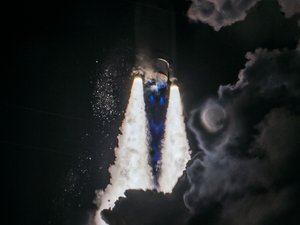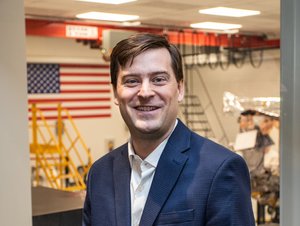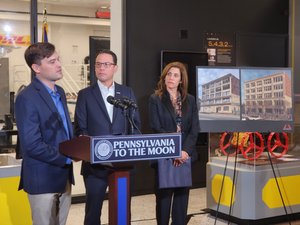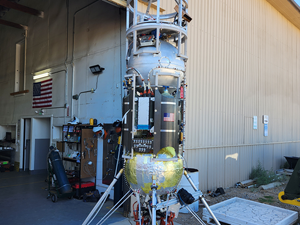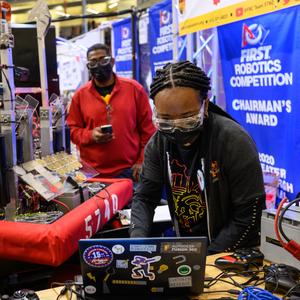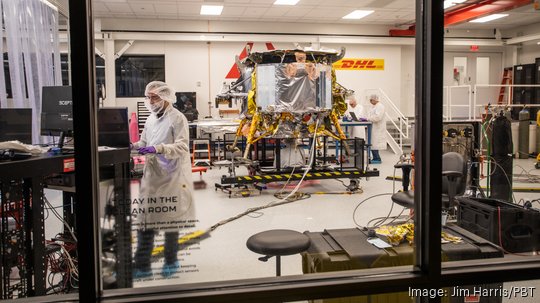
After a successful liftoff from Cape Canaveral, Florida, and separation from United Launch Alliance's inaugural Vulcan Centaur rocket early Monday morning, Astrobotic Technology Inc. announced that the maiden mission of its Peregrine Lunar Lander has come to a premature end.
It's a conclusion that has been reached following a propellant leak onboard Peregrine's propulsion system that engineers of the Pittsburgh-based company first identified late Monday morning. Crews, working around the clock out of Astrobotic's mission control center and headquarters on the North Side, have tried to remedy the issue, but the original plans to put the lander on the moon have since been scrapped given that this system is critical to ensure a gentle touchdown on the lunar surface.
"Given the propellant leak, there is, unfortunately, no chance of a soft landing on the moon," Astrobotic said in a statement Tuesday afternoon. "The team continues to work to find ways to extend Peregrine's operational life. We are in a stable operating mode and are working payload and spacecraft tests and checkouts. We continue receiving valuable data and proving spaceflight operations for components and software relating to our next lunar lander mission, Griffin."
Astrobotic also issued a statement Wednesday morning noting that Peregrine is "operationally stable and continues to gather valuable data," but that the amount of onboard propellant is estimated to last for about 35 more hours, at which point the spacecraft will likely be unable to make any major further adjustments to its positioning.
It marks a major setback for the local tech and aerospace firm, which was racing to be the first private company to put a spacecraft on the lunar surface as part of NASA's Commercial Lunar Payload Services (CLPS) program. Astrobotic, which employs about 200 people, received a $108 million contract to do so and received a $199 million contract from NASA for its forthcoming Griffin lander, which is four times the size of Peregrine and could set out for its lunar landing attempt later this year.
Jay Apt, an astronaut and professor emeritus at Carnegie Mellon University’s Tepper School of Business, said it's too early for Astrobotic to tell what exactly went wrong during the mission that led to this decision.
Failure analysis and the vast troves of telemetry data that's been collected will take "many months" to process, he said. That, coupled with the fact that propulsion systems, in general, are "very difficult to test" in preflight conditions due to myriad scenarios that aren't easily replicable, has Apt drawing parallels to prior space and moon missions that faced similar challenges.
"We don't know yet what these failures were for Peregrine, but they have a very good pedigree, let's say, of trials and tribulations of propulsion systems that have occurred in spacecraft since the very earliest days," Apt said. "This is a long history, and propulsion systems are very difficult to test and to get right. There's no shame in having a [propulsion] system failure on a brand new spacecraft."
Because of this, Apt doesn't have a reason to believe that NASA would simply abandon Astrobotic as one of its key partners in its CLPS program, as insinuated in a report in the New York Times.
"NASA knows very well how long it takes to get a system reliable," Apt said. "I think that there is no lack of understanding at the highest levels of NASA that space is hard. I think that it's easy to speculate. It's also pretty easy for those of us with a long history to remember that the New York Times decried the idea of space travel by saying that Robert Goddard's rocket certainly wouldn't work above the atmosphere because there was nothing to push against."
And NASA basically said as such relating to the difficulties of space exploration back on Jan. 8 when it became apparent that the mission was likely to fail.
"Each success and setback are opportunities to learn and grow," said Joel Kearns, deputy associate administrator for exploration at NASA’s Science Mission Directorate in Washington, D.C., in a statement. "We will use this lesson to propel our efforts to advance science, exploration, and commercial development of the moon."
Chris Hadfield, a retired astronaut colleague of Apt's and writer, agreed that it's important to learn from what happened.
"It's a huge setback for Astrobotic and for all of us," he said. "But at the same time, it's not the start or the end. And it sure looks pretty black to them all there right now, I bet because they have their hopes and dreams. But it's not over and they need to ring every last little bit of information out of this and learn all they can. And then roll that into what they're going to do next."
He added that there should be much that can be gained from Astrobotic's first mission, even if that mission didn't go as planned.
"When you have a failure, I mean — we killed everybody on Columbia; they were all my friends, and so we could have said, 'well, that's it, we didn't do it right this time, so we should never, ever do anything again,' that would be the absolute worst outcome of this. That would be unconscionable, that would be an insult to the seven people who died on Columbia," Hadfield said. "What you need to do is recognize that if you're going to do something hard that has never been done, that has high risk, and it's not always going to work. You have to accept that in the beginning, and you have to build failure into your long-term planning, your financial planning, your agreements planning everything else."
Apt is confident that NASA will continue to move forward with Astrobotic as one of its key partners in the CLPS initiative.
"NASA knows very well how long it takes to get a system reliable," Apt said. "I think that there is no lack of understanding at the highest levels of NASA that space is hard."
Meanwhile, efforts on Astrobotic's Griffin Lander continue, which is set to deliver NASA’s water-detecting rover, VIPER, to the moon. In the future, the company also has plans to provide sustained power to the moon with permanent electricity as part of its LunaGrid platform, and it could do so by 2028 if all goes according to schedule and following a $34.6 million backing from NASA to do so.
